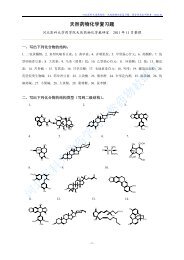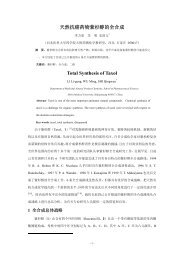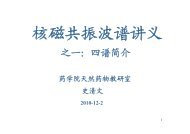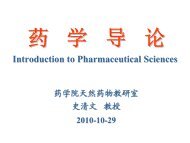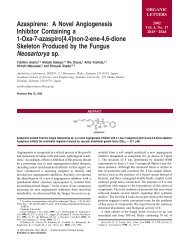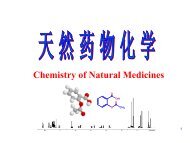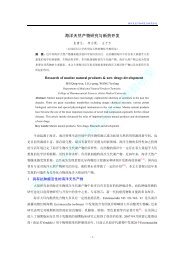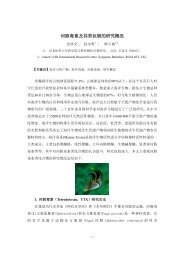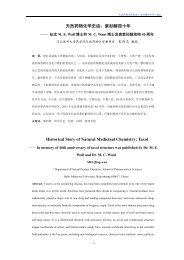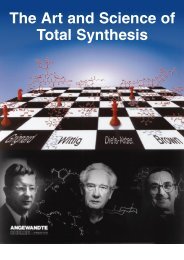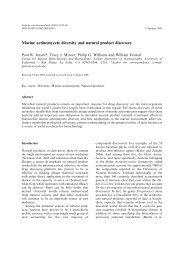Total Synthesis Highlights
Total Synthesis Highlights
Total Synthesis Highlights
Create successful ePaper yourself
Turn your PDF publications into a flip-book with our unique Google optimized e-Paper software.
The dihydronaphthalene 1 was prepared by Diels-Alder cycloaddition of the diene 5 to the<br />
benzoquinone 6, the preparation of which had been reported by Nicolaou in the course of a<br />
previous synthesis of (-)-colombiasin A (4). Silylation of the cycloadduct followed by selective<br />
hydrolysis gave the ketone 7. The ketone was converted to the enol triflate 8, which was reduced<br />
with triethylsilane to give racemic 1.<br />
Exposure of 1 to 2 in the presence of the DOSP Rh catalyst, designed by Davies, delivered the two<br />
adducts 8 and 9. These were carried together to the alcohols 10 and 11, which were separated. The<br />
overall yield of diasteromerically- and enantiomerically-pure 11 from racemic 1 was 34%. This<br />
was 68% of theoretical, since was derived from only one of the two enantiomers of 1.<br />
Homologation of 11 to the diene followed by desilylation under oxidative conditions led to the<br />
quinone 12. Followed the precedent of Rychnovsky, on heating 12 was converted to the<br />
Diels-Alder adduct 13. Demethylation then gave (-)-colombiasin A (4).<br />
The tetracyclic triketone (-)-elisapterosin B (14), also a Pseudoterogoria elisabethae diterpene, is<br />
the intramolecular [5 + 2] cycloaddition product from 12. Again following a Rychnovsky



